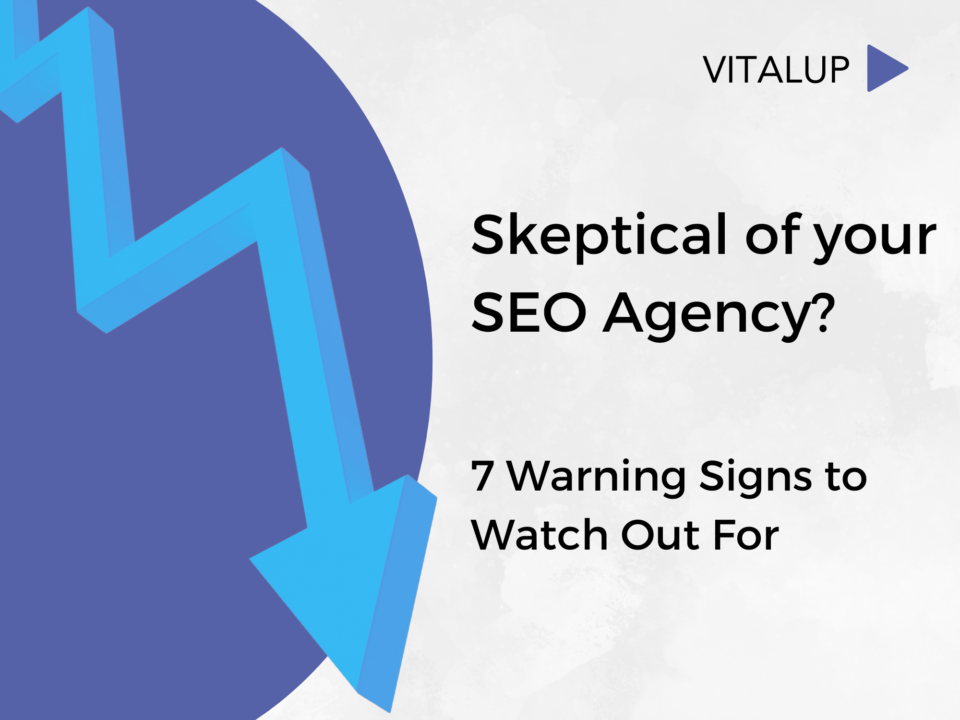
Engage Pet Parents with Informative And Compassionate Marketing
February 19, 2025
Instagram vs TikTok: Which is Better for Promoting Your Business?
February 20, 2025Achieving high rankings for your keywords (keywords are important search terms for your businesses products, services or industry) on Google is a fundamental goal for any business seeking to drive organic traffic and build a robust online presence. However, understanding the nuances of Google’s algorithm and how it seeks to satisfy user intent is crucial to success.
Google(and also Bing and other search engines, continuously update their algorithms to prioritize content that best serves user needs; which means certain types of content can be more effective in gaining visibility. In this comprehensive guide, we’ll explore five content formats that consistently perform well on Google, discuss why they are favored, and provide actionable tips for leveraging these formats to enhance your SEO strategy.
1. Blog Posts

Publishing of Blog Post
Blog posts are the cornerstone of content marketing and search engine optimization (SEO), and for good reason. They offer a versatile platform for addressing various topics and can be tailored to meet diverse user needs. Here’s why blog posts are so effective and how you can optimize them:
Why Blog Posts Rank Well
Word Count: Research shows that longer content tends to rank better on Google. A study by Backlinko found that the average content length of a top-ranking page is 1,890 words.
However, the optimal word count can vary depending on the search requirements. For complex topics, aim for 1,500 to 2,500 words to cover the subject comprehensively. For straightforward queries, with a simple answer, a shorter, more focused post can be equally effective – 700 to 1000 words.
Design: The structure of your blog post is crucial. Use headings and subheadings to break up content and make it scannable. Bullet points and numbered lists enhance readability, making it easier for both users and search engines to digest the information. Stay away from longwinded sentences and big paragraphs. Users, including you and me, prefer easy to read bite size sentences and content.
Backlinks/External Links: Building a network of internal and external links strengthens the context of your blog post. Internal links keep users engaged by directing them to related content on your site, while external links to reputable sources add credibility and authority. That being said, don’t put random links to other pages in your blogs. Make sure the links provide continuity or a connection to the topic of the blog with the next blog. You want to keep the users on your site as long as possible to build the trust and bring them back.
Tips for Creating Effective Blog Posts
- Keyword Research: Conduct thorough keyword research to identify terms and phrases relevant to your audience. Use tools like Google Keyword Planner or Ahrefs to find high-volume keywords and incorporate them naturally into your content.
- Engaging Headlines: Create compelling headlines that capture attention and encourage clicks. A/B test different headlines to determine which resonates most with your audience. The headlines must resonate with your audience and hook them into reading further.
- Visuals and Media: Enhance your blog posts with images, videos, and infographics. Visual content not only makes posts more engaging but also helps explain complex concepts. If possible don’t use stock images, but rather images from your own work, company, activities, staff or locations. This will create more authenticity with your users and make the company more “human.”
2. How-To Guides

Step-By-Step Guide
How-to guides are invaluable for users seeking specific solutions or step-by-step instructions. These guides address particular problems or tasks, making them highly relevant to users’ needs. The good thing about how-to guides is that you can link another how-to guide to the original guide – there are always problems to solve and if your solutions resonate then your audience will keep reading!😀
Why How-To Guides Rank Well
Targeted Intent: How-to guides directly address user questions with actionable solutions. By providing clear, step-by-step instructions, these guides meet the needs of users seeking practical and creative advice. The more out of the box answers you can offer the better your results will be.
Logical Structure: A well-organized guide follows a logical sequence, making it easy for users to follow along. This structure enhances user experience and readability. Use numbering or bulletpoints, thus making it easier for users to see the progression in a step by step process. The simpler the better!
Multimedia Integration: Incorporating videos, images, or infographics into how-to guides helps users better understand complex processes. Visual aids can significantly enhance the effectiveness of your guide. People are watching and viewing more and reading a whole lot less. T
he more videos and images you can include the more your audience will stay on your site and see your blog as a solution. Videos don’t have to be a glossy, or heavily branded production. You can create simple videos on your mobile phone so long as the information provides a well articulated solution… just make sure the video quality is decent.
Tips for Creating Effective How-To Guides
- Detailed Instructions: Provide comprehensive and easy-to-follow instructions. Include screenshots or videos where applicable to illustrate each step clearly.
- User Feedback: Encourage readers to leave comments or questions. Use this feedback to refine and improve your guide.
- Update Regularly: Ensure that your how-to guides are up-to-date with the latest information and trends. Regular updates keep your content relevant and useful. Don’t publish and forget! Set reminders to come back to the blog every 6 months or year, depending on the type of solutions you are providing.
3. Listicles

Listicle Content
Listicles—articles structured as lists—are incredibly popular because they present information in a clear, digestible format. These types of content are easy to scan and provide quick answers to users’ queries. Basically users or your audience wants to quickly read what the blog is about and if you have headlines in a list it’s a quick way for your reader to scan the page and determine if it’s worthwhile. You are making it easier for your audience to read your content – always a winning strategy.
Why Listicles Rank Well
User Engagement: Listicles cater to users who prefer quick, digestible information. Their structured format allows for easy scanning, keeping readers engaged.
Higher Time on Page: The structured nature of listicles encourages users to spend more time on the page. This increased engagement signals to Google that your content is valuable.
Shareability: Listicles are often shared on social media due to their engaging format. This increased sharing can lead to more backlinks and higher SEO performance. To be clear, the list themselves are easy to repost on social media platforms, but the details of the lists should stay on the blog and not be posted on your socials – it will be too long.
Tips for Creating Effective Listicles
- Catchy Titles: Use engaging and descriptive titles to attract attention. Titles like “10 Best Tips for…” or “5 Essential Tools for…” are effective in capturing interest.
- Comprehensive Content: Ensure that each item on your list is thoroughly explained. Provide value in each point to keep readers interested.
- Visual Elements: Incorporate images or icons to enhance each list item. Visual elements make the content more engaging and easier to understand.
4. Infographics

Visually Engaging Infographic
Infographics are visual representations of information or data. They simplify complex topics and make them more accessible to users, which is why they perform well in search rankings. Important – infographics are meant to simplify complex topics, not make things more confusing. Often you will see infographics that make you scratch your head and think – what on earth does that mean? That’s exactly what you don’t want – the simpler the better.
Why Infographics Work
Visual Appeal: Infographics are visually engaging and can convey complex information in an easily digestible format. This visual appeal increases the likelihood of shares and backlinks. Remember people are viewing and watching more than they are reading!
Potential for Backlink Generation: Infographics are highly shareable and often lead to other websites linking back to your content. This can significantly boost your SEO. If the infographics takes a complicated issue and reduces it into an easily digestible visual, then many people will want to repost or share it.
SEO-Friendly: Properly optimized infographics, including descriptive alt text and relevant keywords, enhance their discoverability. Embedding them in well-optimized blog posts can further improve your SEO.
Tips for Creating Effective Infographics
- Clear and Concise: Ensure that your infographic is clear and focused. Avoid clutter and present information in a straightforward manner.
- High-Quality Design: Invest in professional design to create visually appealing infographics. High-quality graphics enhance credibility and engagement.
- Promote and Share: Share your infographics on social media and other platforms to increase visibility. Reach out to industry influencers or bloggers who might be interested in featuring your infographic.
5. Videos

High Engaging Videos
Video content is increasingly important in SEO and user engagement. Videos can be used for various purposes, from tutorials to product reviews, and they are favored by both users and search engines.
Once important to note here is that you don’t want to take people away from your site. Therefore, you should embed the videos into your site, or if you are using YouTube, make sure you have other relevant content on your YouTube channel so that the user keeps consuming your content and is not taken to someone else’s YoutTube channel by the algorithm.
Why Videos Rank Well
High Engagement: Videos keep users engaged and encourage them to spend more time on your site. The longer users stay on your page, the better the SEO signals.
Growing Popularity: Video content is rapidly gaining popularity, with platforms like YouTube experiencing significant growth. Videos cater to users who prefer visual and auditory learning.
Dual Exposure: Videos can rank on both Google and YouTube, providing dual opportunities for visibility and driving traffic to your site.
Tips for Creating Effective Videos
- Quality Content: Focus on producing high-quality, relevant videos. Ensure clear audio and video quality to maintain viewer engagement.
- Optimization: Optimize video titles, descriptions, and tags with relevant keywords. Include a compelling call-to-action to encourage viewers to visit your website.
- Promotion: Promote your videos across social media and embed them in your blog posts or landing pages. This increases visibility and encourages shares.
Conclusion
Incorporating various content formats into your marketing strategy can significantly enhance your website’s visibility and engagement. Blog posts, how-to guides, listicles, infographics, and videos each offer unique advantages and can cater to different user intents. By understanding and leveraging these formats effectively, you can improve your chances of ranking well on Google and driving more traffic to your site.
Remember to focus on producing high-quality content that aligns with user needs and preferences. Regularly update your content to keep it relevant and valuable. By doing so, you’ll not only boost your SEO but also build a stronger connection with your audience.
At Vitalup Marketing, we are experts at creating content that will rank well on Google. Call us or make an appointment today to hear how we can get your ranking #1 on Google!




